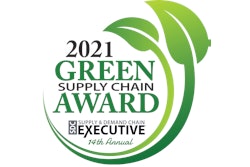
Sustainability continues to skyrocket in priority for organizations across every industry. In the past, many industries were slow to jumpstart their focus on environmental initiatives. Today, companies are paying more attention to the sustainability risks throughout their entire supply chains with the threat of legal and reputational risks, as well as financial investments at stake.
How does a renewed focus on sustainability factor into organizations’ procurement and pre-qualification processes? In an increasingly global economy, complex supply chains may expose companies to hidden risks and stakeholders continue to demand greater transparency and action when it comes to environmental, social and governance (ESG) initiatives. More companies are beginning to examine how this can be monitored and accounted for in their supply chain to ensure they are practicing sustainable sourcing.
Sustainability roadblocks in the supply chain
There are several roadblocks in the procurement process that can affect companies’ sustainability initiatives. A lack of transparency in the supplier’s approach and a lack of standardized data pertaining to ESG initiatives are some of the biggest challenges. Oftentimes, contractors and suppliers may not even be aware of how their operations are impacting the ESG of their hiring clients.
The disconnect between the procurement department and other departments within a single organization is a root cause of many transparency issues. Larger organizations are consistently facing a lack of effective communication between their business units, so aligning on expectations among these internal groups is the first step to standardizing an organization’s ESG priorities. In addition to more strategic communication internally, incorporating education that also reaches suppliers is critical. Being upfront with suppliers regarding the organization’s expectations surrounding ESG requirements can help create transparency in order to prioritize sustainability throughout the whole supply chain.
Another roadblock affecting ESG in the procurement process is inaccurate or inconsistent data in relation to ESG efforts across multiple systems. Today, companies are still at several different stages when it comes to tracking pre-qualification documentation from their contractors and suppliers. With a wealth of information at our fingertips, it can be overwhelming for managers to properly evaluate collected data from a holistic perspective. Leveraging a digital solution, such as a contractor management platform, can improve the efficiency of the pre-qualification process. Technology can strengthen organizations’ relationships with their suppliers and contractors to be partners in managing risk and overcoming roadblocks in procurement. Specifically, the use of technological services allows for ESG and sustainability-related procurement items to be tracked to view trends in a centralized location, and can offer the hiring organization the benefit of analyzing their entire procurement process through their own configured lens. From here, it makes it easier to communicate these ESG priorities to suppliers to ensure sustainability is top of mind across the supply chain.
ESG lifecycle of consideration
There are certainly many challenges to understand when determining how ESG may play a role in an organization’s supply chain. An “ESG lifecycle of consideration” offers a method to properly assess what ESG initiatives are being taken into account every step of the way.
As with every partnership in procurement, it begins with the bidding process to select the right contractor or supplier for the job. This starts with ensuring the organization has an effective way of identifying contractors and suppliers who are aligned with its ESG values. For organizations truly looking to make a difference, this means doing a deep dive beyond the typical metrics that are used to qualify contractors and suppliers which historically consist of financial, competency, quality of work, and safety performance. Pushing ESG to be a top qualifier and seeking to better understand supplier diversity in pre-qualification is key, but it should also extend into the qualification process and contribute positively to an organization’s ESG scores as a whole.
ESG initiatives are largely dependent on transparency, so once a potential contractor or supplier is identified, communication in the procurement process is vital. Communicating the organization’s ESG initiatives is the first step, next is the commitment from the contractor or supplier to those values as well. Alignment from both parties is critical and the best way to ensure that the contractors and suppliers that an organization partners with have a responsible approach to conducting business and truly add value to the partnership in the long-term.
Once aligned, it’s important to consider how to ensure ESG efforts are being put into play. The responsibility of actively measuring the impact contractors and suppliers have on ESG while at work is necessary once the contract is signed. This holds both parties accountable to the ESG initiatives agreed upon at the onset of the contract as work is performed.
Lastly, there should be a continued evaluation of how well the contractor or supplier aligns with the organization’s ESG values once the contract begins. By performing another assessment, they can determine if the commitment to the company’s ESG efforts is being upheld, and ultimately, if they would like to continue using the contractor or supplier. As mentioned above, digital solutions can help track data to ensure processes are meeting a company’s ESG goals, so having assessments of metrics and analyzing data regularly is a necessary step to an ongoing partnership.
ESG is a journey
Attempting to create ESG values and implement them throughout the entire supply chain is an extremely tedious process. For less mature organizations, there are even more challenges faced when carrying out these ESG initiatives. Nevertheless, communication, transparency and accountability play a critical role throughout the procurement process, beginning with pre-qualification. For organizations looking to prioritize sustainability, understanding the roadblocks and leveraging an ESG lifecycle assessment is a great foundation.



















